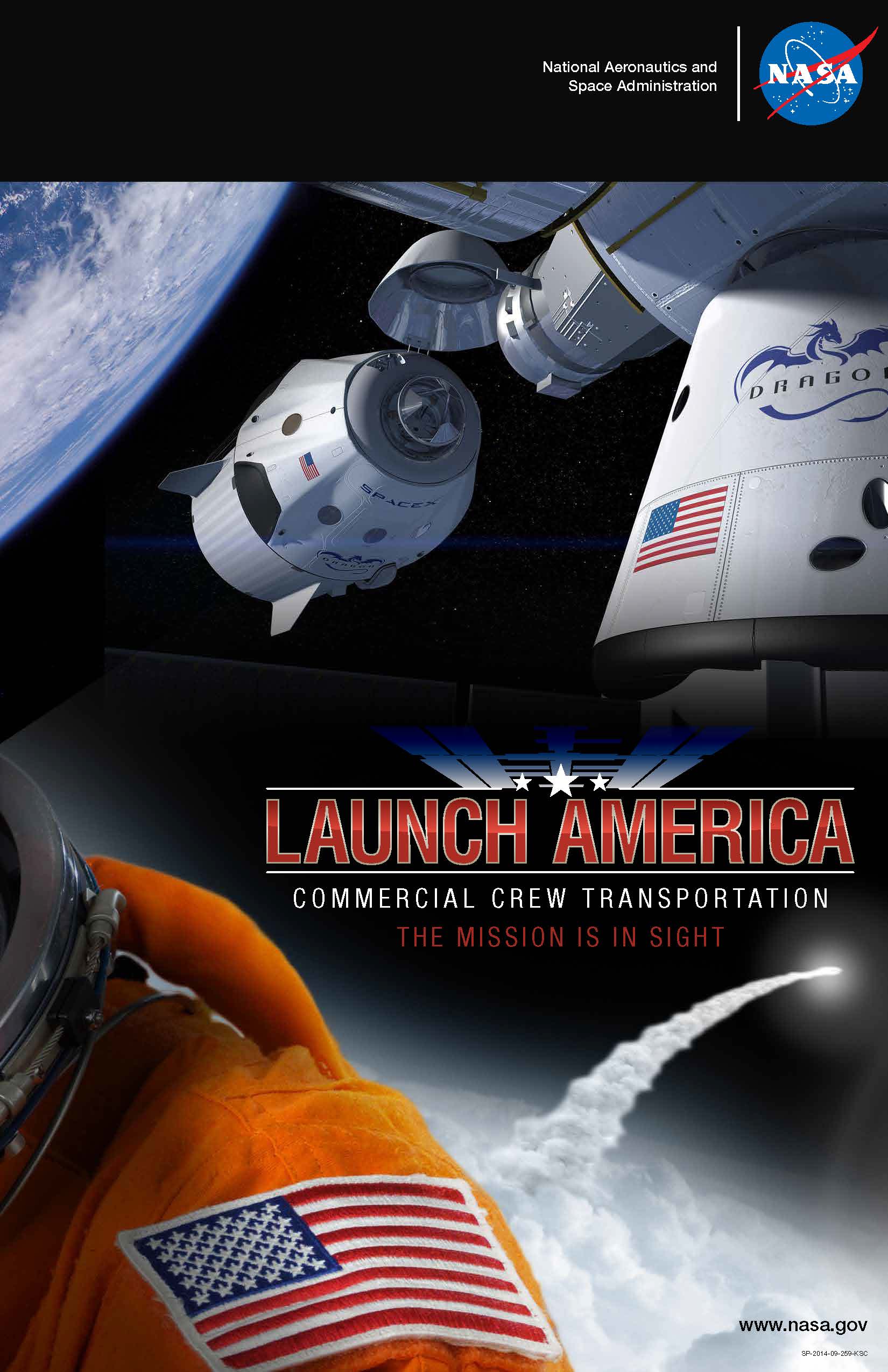
KENNEDY SPACE CENTER, FL — Moving briskly forward, SpaceX has completed the first milestone under the new Commercial Crew Transportation Capability (CCtCap) contract recently awarded by NASA that will eventually lead to construction of the crewed Dragon V2 spaceship that will launch our astronauts to the International Space Station (ISS) less than three years from today.
NASA announced that SpaceX successfully passed the Certification Baseline Review milestone dealing with the current design baseline for the firm’s Dragon V2 astronaut transporter.
During the review, SpaceX officials outlined how they will manufacture the crewed Dragon spacecraft as well as the Falcon 9 v.1.1 rocket that will launch it to orbit.
Furthermore, SpaceX gave a detailed description of how they will achieve NASA certification of the Falcon 9/Dragon system for ferrying human crews to the space station and back.
“This milestone sets the pace for the rigorous work ahead as SpaceX meets the certification requirements outlined in our contract,” said Kathy Lueders, manager of NASA’s Commercial Crew Program, in a statement.
“It is very exciting to see SpaceX’s proposed path to certification, including a flight test phase and completion of the system development.”
SpaceX is headquartered in Hawthorne, Calif., and founded by billionaire entrepreneur Elon Musk, who serves as CEO and Chief Designer of SpaceX.
Musk unveiled the look and design of the manned Dragon V2 during a live May 2014 streaming webcast direct from SpaceX’s state-of-the-art design and manufacturing facility and Headquarters in Hawthorne, Calif.
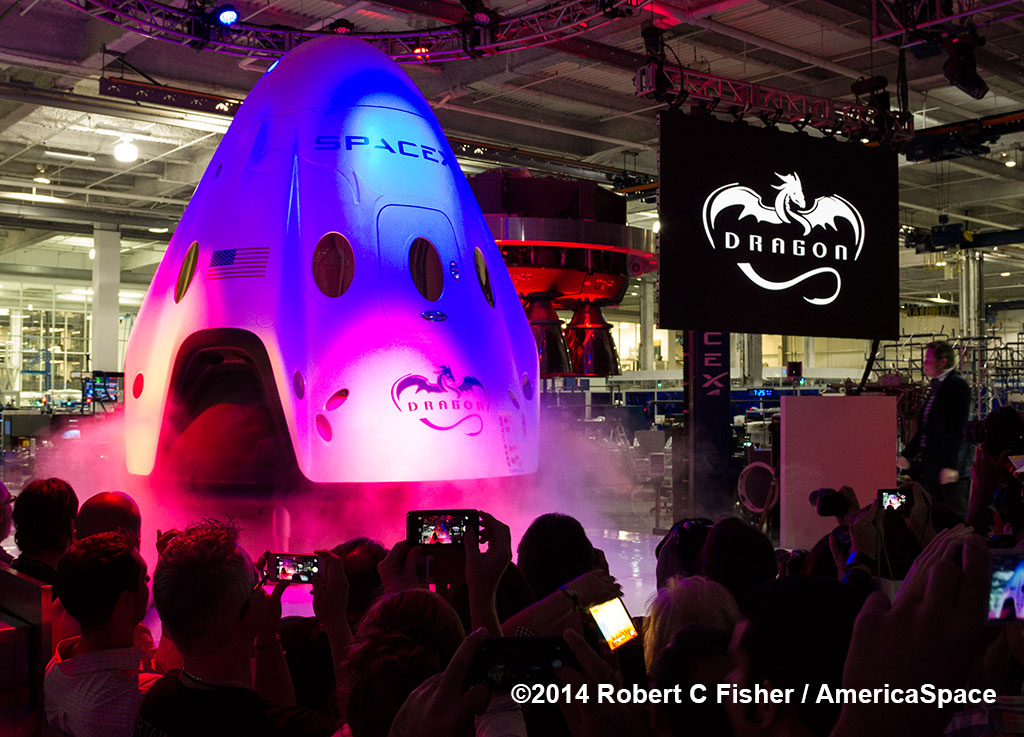
NASA’s commercial crew program (CCP) aims to end our current sole source dependency on Russia for transporting U.S. crews to the ISS aboard Soyuz capsules by around the summer of 2017, if not sooner.
The CCP program is the fastest and cheapest way to get America’s back to space with American rocketry as quickly and safely as feasible.
The commercial crew program was started in 2010 as a public-private partnership to foster the development of privately built human-rated spaceships to launch American astronauts from American soil on American rockets to low-Earth orbit and the primarily American-built space station circling overhead.
On Sept. 16, 2014, NASA Administrator Charles Bolden announced that SpaceX and Boeing were both awarded contracts under the Commercial Crew Transportation Capability (CCtCap) program and NASA’s Launch America initiative, designed to return human spaceflight launches to the United States and end our total reliance on Russia.
Since the forced retirement of NASA’s space shuttles following wheel stop on the final shuttle mission (STS-135), all our astronauts have been forced to hitch a ride to the space station with the Russians at a cost of $70 million per seat under the most recent contract with Roscosmos, the Russian Space Agency.
“From day one, the Obama Administration made clear that the greatest nation on Earth should not be dependent on other nations to get into space,” Bolden told reporters including AmericaSpace during the September 2014 briefing at the agency’s Kennedy Space Center in Florida.
Under the CCtCAP award, NASA awarded contracts valued at $6.8 billion to Boeing and SpaceX aimed at restoring America’s astronaut launch capability by the end of 2017.
SpaceX was awarded $2.6 billion to build the Dragon V2 spacecraft and launch between one and six flights atop the firm’s man-rated Falcon 9 rocket.
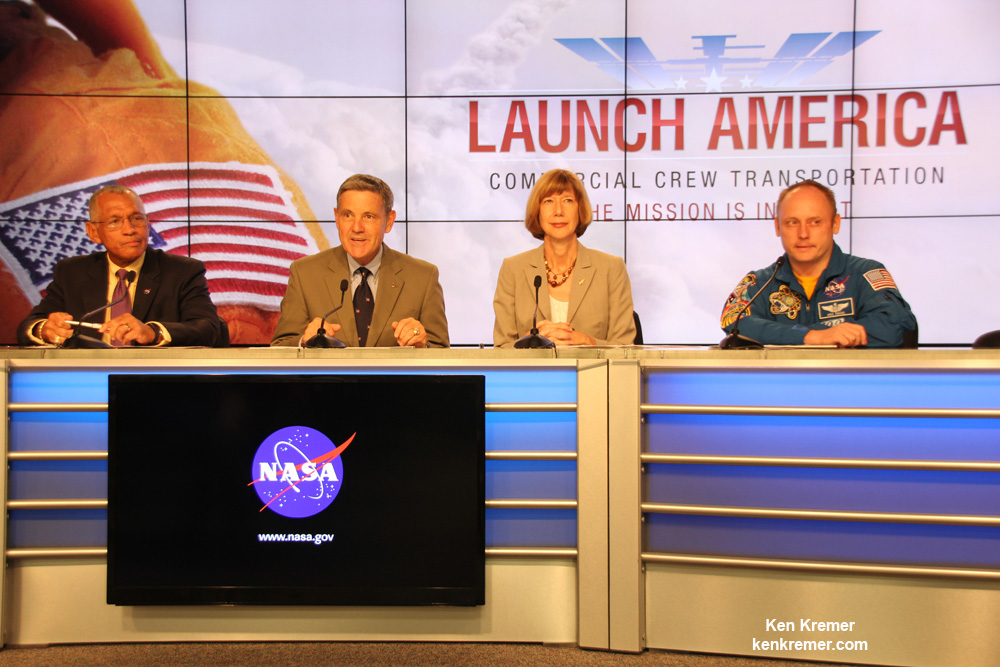
Boeing was awarded a similar contract worth $4.2 billion to build the CST-100 space taxi.
“SpaceX designed the Dragon spacecraft with the ultimate goal of transporting people to space,” said Gwynne Shotwell, SpaceX President and Chief Operating Officer.
“Successful completion of the Certification Baseline Review represents a critical step in that effort—we applaud our team’s hard work to date and look forward to helping NASA return the transport of U.S. astronauts to American soil.”
Both the Dragon V2 and the CST-100 are designed to carry a mix of cargo and up to seven crew members to the ISS. Most likely they will fly with a crew complement of either four or five astronauts including at least one trained as a pilot.
Both spaceships are also capsule design with parachute assisted landings.
After the commercial Dragon V2 and CST-100 vehicles become operational, the ISS crew size is projected to increase.
“The ISS crew size will increase to seven with the commercial crew program,” William Gerstenmaier, NASA Associate Administrator for Human Spaceflight, told AmericaSpace in a prior interview.

The Dragon V2 is designed to be able to remain docked at the station for up to 210 days and serve as a 24/7 crew lifeboat for a fast exit and return to Earth in case an emergency evacuation is ordered.
The Dragon V2 builds on the extensive experience SpaceX has gained with the initial cargo freighter version of the Dragon that was built under NASA’s Commercial Resupply Services (CRS) contract. The sleek and gleaming V2 looks decidedly different from the cargo Dragon.
Under the $1.6 billion CRS award with NASA, SpaceX must deliver 20,000 kg (44,000 pounds) of cargo to the ISS during a dozen Dragon cargo spacecraft flights through 2016.
To date, SpaceX has completed four CRS missions. The Dragon CRS-5 mission is now slated to launch no earlier than Jan. 6, 2015, following the successful completion of the static fire first stage test on Dec. 19.
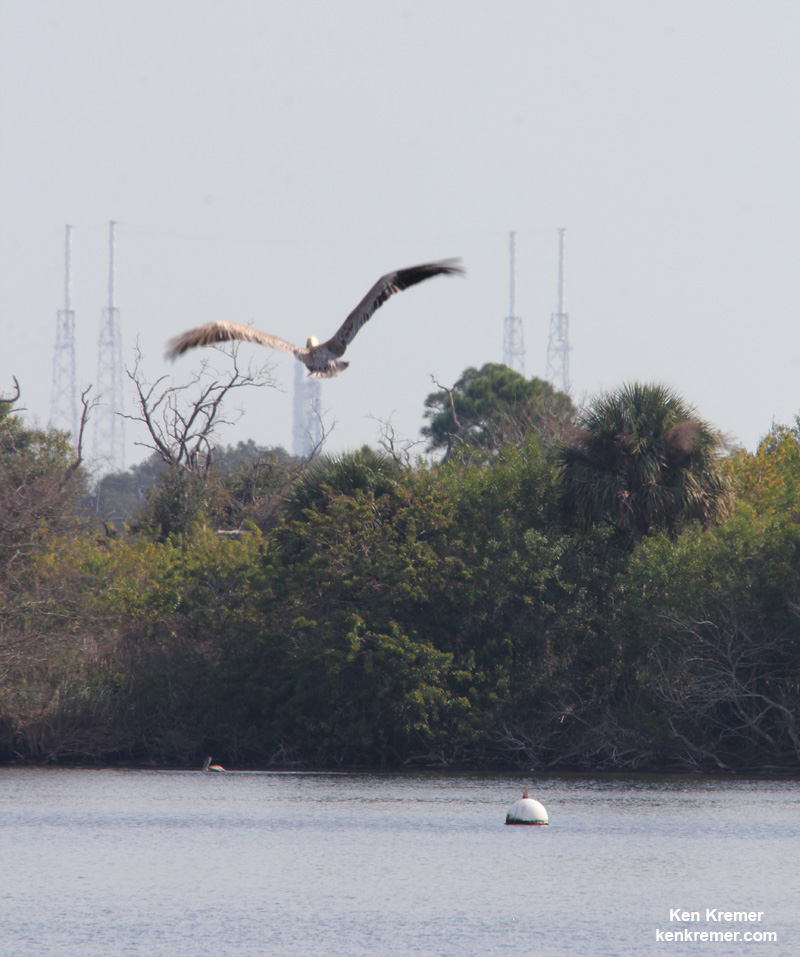
NASA expects that the first orbital test flight of the crewed Dragon and CST-100 vehicles will occur by mid- to late-2017.
The manned Dragon and Falcon 9 v1.1 rocket will launch from NASA’s historic Launch Complex 39A at the Kennedy Space Center in Florida that launched Americans to the Moon during the Apollo program and to Earth orbit during the Space Shuttle Era.
SpaceX has signed a long-term lease with NASA for pad 39A and is currently renovating and altering the pad to accommodate the Falcon 9/Dragon architecture.
NASA and SpaceX teams will work together over the next few years to ensure that all systems, materials, and operations will be ready to launch, fly, land, and recover the crew.
All the while, SpaceX must pass a continuing series of stringent NASA milestones to insure operability, safety, and reliability in order to continue to receive NASA funding and the all important certification to launch humans.
SpaceX is also building a new processing and integration hanger at the entrance to pad 39 to assemble the vehicles and roll them out a short distance to the modified launch pad.
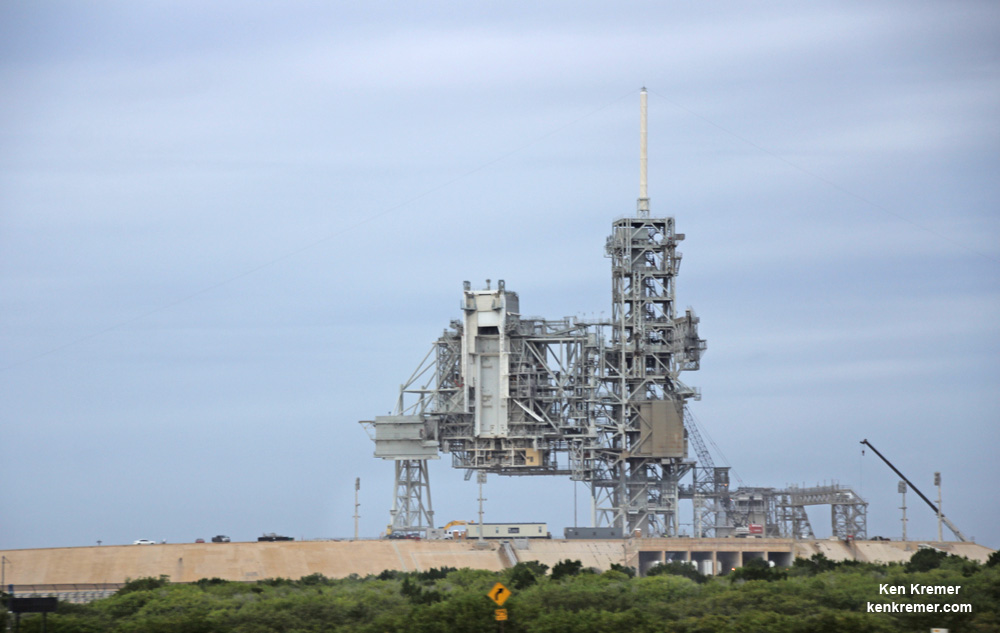
SpaceX must also complete its final milestones under the prior Commercial Crew Integrated Capability initiative (CCiCAP) run under the auspices of NASA’s Commercial Crew Program.
Among the CCiCAP milestones still to be finished in 2015 are a pair of abort tests to ensure crew safety in the event of a launch emergency.
During an earlier discussion this writer had with Elon Musk in Cocoa Beach, he said the two abort tests had been planned for 2014. But they have now been shifted into the first half of 2015. One is planned for Cape Canaveral pad 40 and the other at Vandenberg AFB.
The initial commercial crew manned orbital test flight will likely fly with at least two pilots aboard, including at least one NASA astronaut.
The goal will be to “verify the fully integrated rocket and spacecraft system can launch from the United States, maneuver in orbit, and dock to the space station, and validate its systems perform as expected,” says NASA.
In the meantime the Boeing CST-100 has already passed its first two CCtCAP milestones involving the Ground Segment Critical Design Review and other processing and manufacturing items similar to SpaceX.
Following the successful launch of NASA’s Orion deep space capsule on its first test flight on Dec. 5, both pillars of NASA’s multipronged human spaceflight strategy encompassing low-Earth orbit (LEO) and beyond-Earth orbit (BEO) crewed flights have kicked into high gear.
Orion came back to KSC for its homecoming on Dec. 19.
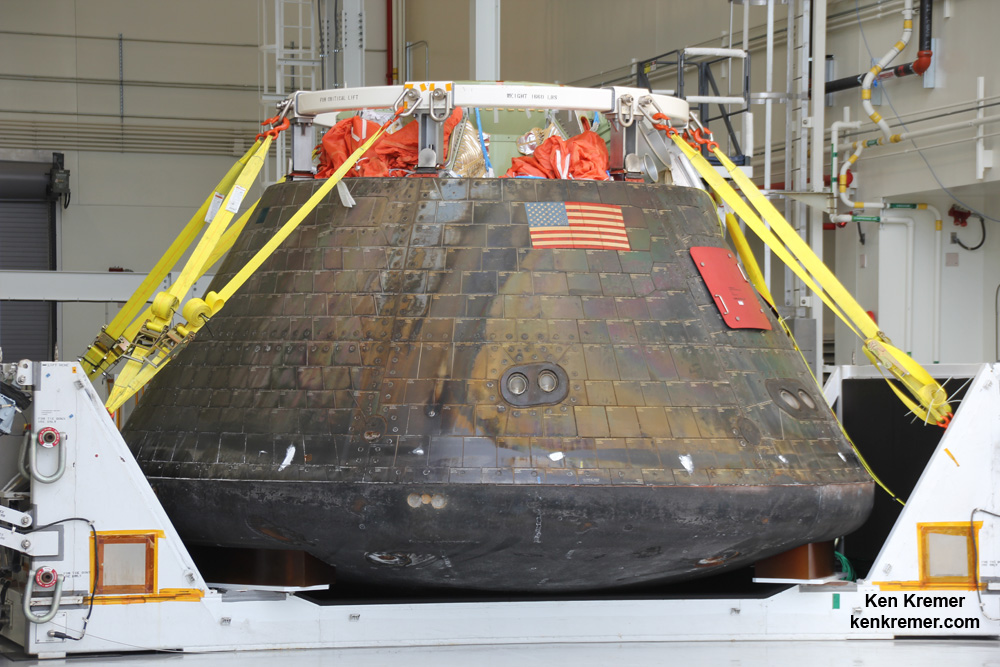
Stay tuned here for continuing updates.
Want to keep up-to-date with all things space? Be sure to “Like” AmericaSpace on Facebook and follow us on Twitter: @AmericaSpace
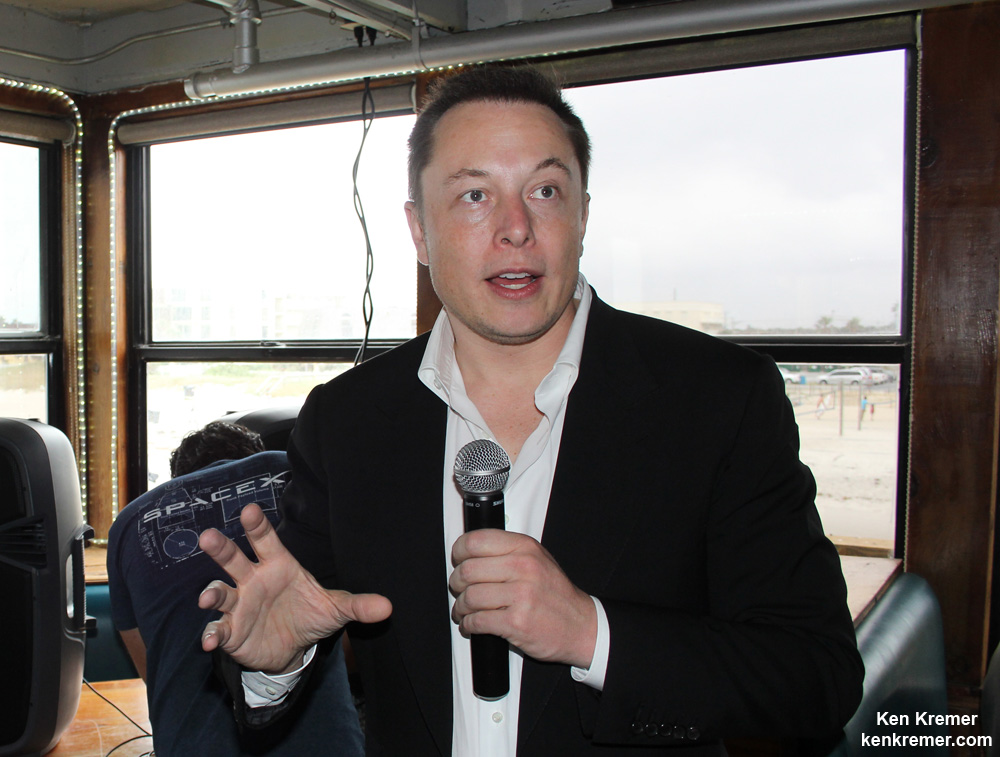




Wonderful article, Ken.
thank you !
I thought Dragon V2 was to land on land under propulsed rockets without the use of parachutes…Has that changed?
I expect there was pushback from NASA to stick to parachutes until a fully propulsive landing is actually demonstrated, not unlike the notion of reusing Dragon capsules. NASA doesn’t mind if its commercial partners try new things, they just don’t want them trying new things out on NASA flights. So just like the first re-flown Dragon won’t be on a NASA mission, the first fully propulsive Dragon V2 landing from orbit won’t be either.
The testing of both parachute-aided and propulsive landing should start next year with what they’re calling the DragonFly. They received their FAA clearance to do several dozen air-drops and short hops at McGregor in August.
“Under the 1.6 Billion CRS award with NASA, SpaceX must deliver 20,000 kg (44,000 pounds) of cargo to the ISS during a dozen Dragon cargo spacecraft flights through 2016.”
Per attached article the original contract was for CRS missions, they were to be completed by December 2015; but were extended to December 2017 (a two year extension).
“In a note posted on an agency procurement website, NASA said it plans to extend the Commercial Resupply Services (CRS) contracts it gave Orbital and SpaceX in 2008 “for up to 24 months from December 2015 to December 2017.””
http://spacenews.com/40059nasa-says-it-will-extend-private-iss-cargo-delivery-contracts-through-2017/
Question: Has the extension been “cut back” to December 2016?